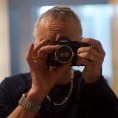Ansel Adams on Leica Q - spot metering and applying the zone system digitally.
-
Recently Browsing 0 members
- No registered users viewing this page.
-
Similar Content
-
- 6 replies
- 6,525 views
-
M11 Spot metering
By Spo,
- 12 replies
- 941 views
-
- 3 replies
- 469 views
-
- 18 replies
- 1,015 views
-
- 5 replies
- 746 views
-


Recommended Posts
Join the conversation
You can post now and register later. If you have an account, sign in now to post with your account.
Note: Your post will require moderator approval before it will be visible.